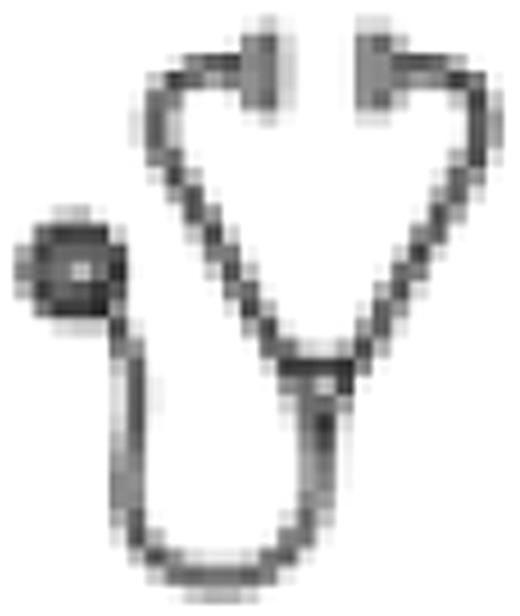Abstract
Abstract 3681
Pediatric Immune Thrombocytopenia (ITP) has an incidence of 4–6/100,000 with 1/3 of cases becoming chronic. Treatment choice is arbitrary, because few studies are powered to identify predictors of therapy response. Increasingly, rituximab is becoming a treatment of choice in those refractory to other therapies (Neunert CE, et al. Pediatr Blood Cancer 2008; 51(4):513). Previous studies in ITP have not examined predictors of response to rituximab or whether response to prior treatments predicts response.
To evaluate univariate and multivariable predictors of platelet count response to rituximab.
After local IRB approval, 550 patients with chronic ITP enrolled in the longitudinal, North American Chronic ITP Registry (NACIR) between January 2004 and June 2010. Eligibility included: ages 6 months-18 years at ITP diagnosis, clinical diagnosis of ITP, and ITP duration >6 months. Primary ITP was defined as isolated thrombocytopenia without associated conditions. Secondary ITP included those patients with immune thrombocytopenia associated with other immune-mediated medical conditions, including Evans Syndrome. Treatment response was defined as a post-treatment platelet count ≥50,000/uL within 16 weeks of rituximab and within 14 days of steroids. Steroids were prescribed as 1–4 mg/kg prednisone or adult equivalent over 4–14 days with or without taper. The NACIR captured treatment responses both retrospectively prior to enrollment and then prospectively, and both periods were included in this analysis. The multivariable logistic regression modeling process utilized SAS 9.1 using binary variables which were either significant in the univariate analysis or clinically important. A backwards elimination procedure was used to select the final model.
Seventy-six (13.8%) patients were treated with rituximab. Demographics of the patients treated with rituximab include: 42% male; 81% Caucasian, 17% Black, and 2% Asian. The mean age at diagnosis of ITP was 8.4 ± SD 5.1 years. The median platelet count at diagnosis of acute ITP was 10,000/uL (IQR 5,000-20,000/uL). 19 (25%) patients had secondary ITP or Evans syndrome. Treatment with rituximab had an overall response rate of 63.2% (48/76). Univariate predictors of response to rituximab are shown in Table I. The strongest univariate predictor of response to rituximab was response to steroids. Gender, ethnicity, and race were not predictive of response to rituximab. Furthermore, other variables which did not predict rituximab response include: history of a bleeding score ≥3 (Buchanan and Adix, J Pediatr 2002; 141: 683), symptoms ≥1 month prior to ITP diagnosis, older age (age >5 years), platelets ≥20,000/uL at acute ITP diagnosis, and a positive ANA. In multivariable analysis, response to steroids remained a strong predictor of response to rituximab with an OR 6.2 (95% CI 1.8–21.3, p=0.004). Secondary ITP also remained a strong a predictor of a positive response to rituximab with an OR 5.9 (95% CI 1.2–33.3, p=0.03).
In the NACIR, response to steroids and secondary ITP were strong predictors of response to rituximab, a finding not previously reported in children or adults. Although this finding requires further validation, this result may provide evidence that rituximab should be most considered in patients previously responsive to steroids.
Significant predictors of a platelet response† to rituximab.
| . | Overall Response . | Odds Ratio . | 95% Confidence Interval . | p value . |
|---|---|---|---|---|
| Rituximab | 63.2% | |||
| Univariate Analysis | ||||
| Secondary ITP Diagnosis | 7.14 | 1.52–33.33 | 0.01 | |
| Platelets ≥20,000/uL at chronic ITP diagnosis | 3.33 | 1.10–10.02 | 0.03 | |
| Positive response to IVIG | 5.11† | 1.36–19.16 | 0.02 | |
| Positive response to steroids | 23.83† | 4.18–135.92 | 0.0004 | |
| Multivariable Analysis | ||||
| Secondary ITP Diagnosis | 5.88 | 1.16–33.33 | 0.03 | |
| Positive response to steroids | 6.20† | 1.80–21.34 | 0.004 |
| . | Overall Response . | Odds Ratio . | 95% Confidence Interval . | p value . |
|---|---|---|---|---|
| Rituximab | 63.2% | |||
| Univariate Analysis | ||||
| Secondary ITP Diagnosis | 7.14 | 1.52–33.33 | 0.01 | |
| Platelets ≥20,000/uL at chronic ITP diagnosis | 3.33 | 1.10–10.02 | 0.03 | |
| Positive response to IVIG | 5.11† | 1.36–19.16 | 0.02 | |
| Positive response to steroids | 23.83† | 4.18–135.92 | 0.0004 | |
| Multivariable Analysis | ||||
| Secondary ITP Diagnosis | 5.88 | 1.16–33.33 | 0.03 | |
| Positive response to steroids | 6.20† | 1.80–21.34 | 0.004 |
Platelet response defined as a post-treatment platelet count ≥50,000/uL.
Off Label Use: Rituximab for chronic ITP. Lambert:Cangene: Membership on an entity's Board of Directors or advisory committees. Klaassen:Novartis: Research Funding; Cangene: Research Funding. Neufeld:Novartis, Inc: Research Funding.

This icon denotes an abstract that is clinically relevant.
Author notes
Asterisk with author names denotes non-ASH members.

This feature is available to Subscribers Only
Sign In or Create an Account Close Modal